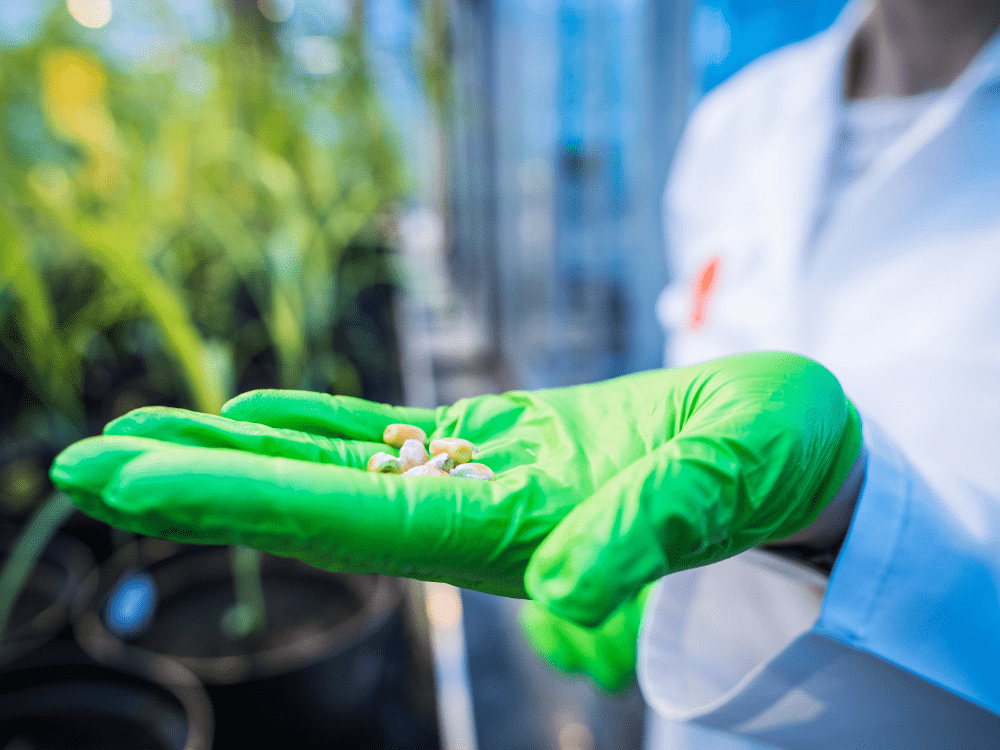- Seed gene editing startup Inari has closed a $124 million Series E round. This brings the company’s total funding to $475 million and bumps its valuation to $1.5 billion.
- The round included participation from Canada Pension Plan Investment Board (CPP Investments) and Inari founder Flagship Pioneering.
- Existing investors Hanwha Impact Partners, NGS Super and Banque Pictet on behalf of some of their customers also participated, along with new investor Sage Hill Investors.
- Inari will use the new funding to scale up product development on the road to commercialization.

On background:
Founded in 2016 by Flagship Pioneering, Inari’s SEEDesign platform uses gene-editing tools to enhance the natural diversity of seeds. More seed diversity allows for increased food production while reducing the amount of water and chemical inputs needed for crops.
Common technologies for genetically modified crops are made for one gene, often a foreign one.
But plants are far more complex than humans, Inari CEO Ponsi Trivisvavet tells AFN. In order to unlock the full potential of seeds that will enable real sustainability, we need to be editing for multiple genes at the same time.
Inari’s multiplex gene-editing technology can increase soybean yield by 20% and corn yield by 10% while lowering water usage by 40% and reducing corn’s nitrogen needs by 40%.
The company only works with genes that are native to the plants.
Recent milestones:
Trivisvavet mentions three key milestones Inari has met since raising a $208 million Series D last year.
This past summer, Inari grew demo plots of its single-edit soybeans with its independent seed company customers. These were demonstrated to more than 10,000 growers and are shortly due for harvest. While multiplex edits are Inari’s main focus, these single edits were necessary for proof of concept and for “familiarizing farmers with what this technology can bring.”
The Inari farm facility currently grows multiplex crops.
The company was also granted several patents this year for its technologies and products, says Trivisvavet.
Why it matters:
Ag biotechnologies like Inari’s address one of agriculture’s most pressing problems right now, which is the reliance on enormous amounts of land, water and chemicals to get yields. Farmers around the world labor under the pressure to reduce these inputs and at the same time produce enough crops to feed a growing world population.
Inari’s multiplex gene-editing approach tackles both problems with one product.
Gene-editing technologies have been controversial ever since Big Ag started injecting foreign genes into plants back in the 1990s.
But as noted above, companies like Inari are bypassing foreign genes altogether and working with plants’ natural diversity. Working with native genes also allows the company to skirt regulatory red tape in the US on its route to market.
“No matter what, there’s still the need to bring technologies that help address the challenges of our food system,” says Trivisvavet. “We really appreciate the [investor] confidence in the SEEDesign platform.”
“This fundraise further validates the company’s pioneering advances and fuels the next phase of bringing breakthrough seed solutions to market, thereby unlocking new possibilities for farmers, consumers and the planet,” Robert Berendes, Ph.D., a Flagship Pioneering executive partner and Inari board member, said in a statement.
How Inari will use the funding:
The Series E funding will go towards scaling product development for soybeans, corn and wheat.
Trivisvavet says the company will scale up its operations in West Lafayette, Indiana, including its greenhouses, and will approach commercialization “pretty soon.”
For the foreseeable future, Inari will continue to focus on commodity crops.
“The rationale of that is the sustainability focus, given the fact that these three contribute to 70% of [the world’s crops],” she says. Inari’s technology, she adds, is “applicable to other crops” which the company will explore at some point in the future.




